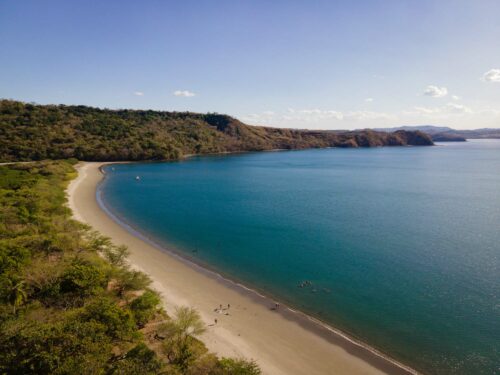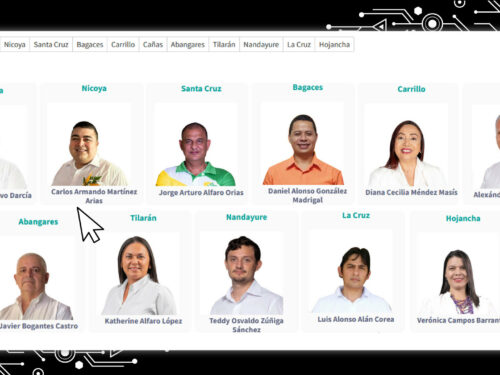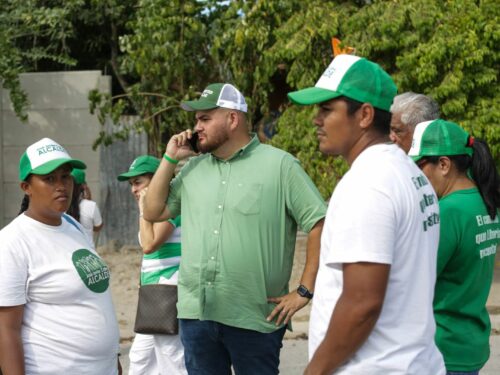
The Municipality of Liberia’s initiative to allocate part of its green areas to hotel, real estate and commercial development for luxury tourism raises doubts and concerns among Liberians. Some are planning to unite voices to ensure that their opinions are taken into account.
“This is a topic of great interest to us due to the entire history of social-economic conflict that exists around this gold coast area,” expressed Víctor Hugo Chacón, from the Integral Development Association of Barrio San Roque in Liberia.
Through this association, the Liberian is looking for a forum for more people to learn about and make observations about the municipal initiative. The municipality, Chacón said, has not yet defined the dates of the next meetings with the communities although they do plan to hold them.
Chacón emphasized that they aren’t opposed to creating a regulatory plan for the canton. What they seek is to propose changes to the local government initiative.
The “gold coast” is included in the preliminary proposal of the Territorial Zoning Plan (Spanish acronym: POT), known as the regulatory plan, by means of which the municipality seeks to organize the canton’s development. Regulatory plans establish what can or cannot be done in each area (houses, businesses, industries, services, agriculture or industries).
Liberia’s POT began to be processed at the end of 2022, when the contract was awarded to the consulting company Ecoplan SRL. However, the first draft documents and maps were published in mid-April.
From that moment and following the article published by The Voice of Guanacaste, several Liberian civil society organizations have been looking closely at the municipal proposal to dedicate 6,000 hectares, which are currently forested lands with cliffs and spectacular views of the ocean, to tourism exploitation.
The regulatory plan christens this exclusive area as the “gold coast.” If approved, that strip that currently looks like a green blanket over the Guanacaste coast would become a gray area with buildings of all kinds. It would even be viable to locate a sports stadium there.
We’re extremely worried because there is enormous freedom in relation to what is proposed to be done with the gold coast. This is an open window to promote gentrification,” Chacón commented.
Gentrification is the displacement of original communities in an area by others that arrive with more resources. That’s precisely the fear that some Liberian voices have about the future of the gold coast.
Protected area under review
Damaris Rodríguez, from the Association for Rescuing the Maritime Land Zone (Spanish acronym: AZERROMATE), said that this organization will pressure for the regulatory plan to clearly demarcate the protected areas and respect them, such as the Iguanita Wildlife Refuge.
As The Voice of Guanacaste published on May 17, the 6,000 hectares (14,826 acres) proposed as the gold coast includes the Iguanita Wildlife Refuge, an area protected by law. On that occasion, the president of the Regulatory Plan Commission, José Rafael Jiménez, who is in charge of urban planning and construction control for the Municipality of Liberia, acknowledged that they received an observation about this and should exclude it.
Asked again about this, the official explained that a technician from the municipality and another from the National System of Conservation Areas (Spanish acronym: SINAC) are reviewing the demarcation of Iguanita and “a whole lot of other things.”
Sometimes people get angry, but the important thing is that we are getting a lot of feedback and that is being included (in the plan). When we put information back [on the website] it will be much better and more accurate,” he said.
Of course, this update of the proposal won’t be done until the Regulatory Plan Commission is sworn in. This process has been pending since the newly elected municipal council took over on May 1st.
Resuming the plan’s socialization meetings with communities and other focus groups in the canton also depends on this swearing-in. For now, these meetings are on hold although the municipal technical staff continues working on the POT.
“Don’t think that we’re secretly cooking the magic potion to cut down all the trees in the canton. “No, no, we’re working,” Jiménez stressed.
The possible deforestation caused by development on the gold coast is precisely an issue that worries Damaris Rodríguez from AZERROMATE.
They talk about monstrous things, they talk [about allowing] any kind of playing field. Obviously to make a playing field, you have to deforest…. If they don’t plan coastal development in accordance with what is there, they’re going to ‘let fly’ whatever they feel like,” she expressed.
Rodríguez added that these concerns are shared by other Liberian civil society groups such as Parque Ecológico and the Confraternidad Guanacasteca Association. Members of these organizations plan to meet to form a common front and draft a document to submit their observations to the municipality.
In addition to the gold coast, Liberia’s regulatory plan proposes creating five other special zones. These are the historical zone, the academic zone, the institutional zone and the airport. They are called special areas because they have a concentration of activities with specific characteristics and needs and also project construction growth in the future.
The proposal also divides the canton into six large areas or transects that range from the most urban (Transect 6) to the green and most rural zones (Transect 1). In these transects, several production or commercial activities with some similarities can be combined and the degree of participation will be regulated.
You can consult the draft of diagnostic documents and maps on the zoning proposal on the municipality’s website in this tab. And if you have questions, observations, recommendations or proposals about the plan, you can send them to the email: [email protected]
Likewise, on the municipality’s website and Facebook page, you can check the dates and places of the next meetings.







Comments